|
|
All Countries Ships of Exploration and Research
|
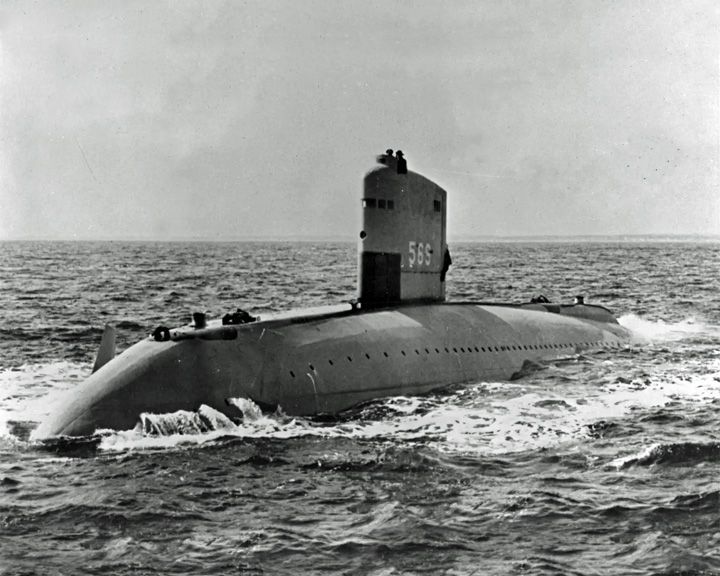 Albacore, USS — American submarine Research submarine that pioneered the teardrop hull of modern submarines. For more than two decades she provided the US Navy information and experience in making submarines faster, quieter, safer and more agile. LAUNCHED: 1953, August 18 → FATE: Decommissioned December 9, 1972. When being towed to a permanent display site in April 1984, she became stuck in the mud of Portsmouth Harbor. In 1985, she was dedicated there as a memorial. |
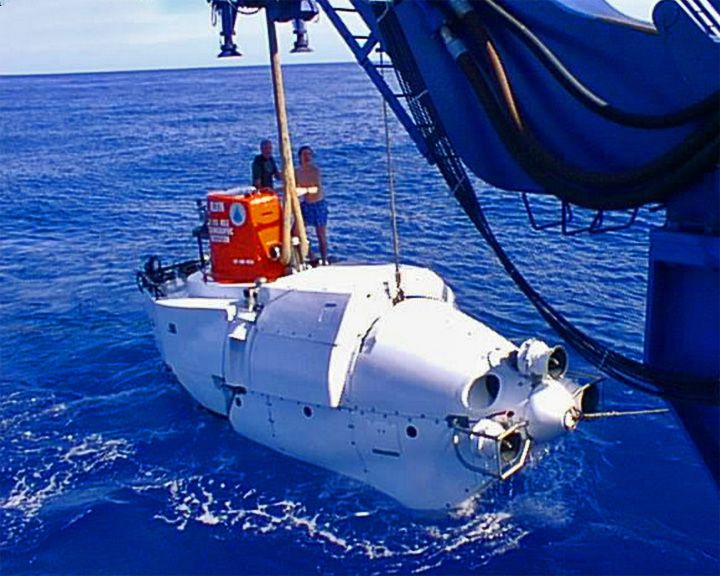 (Another (Another Alvin, DSV — American research vessel; submersible First Deep Submergence Vehicle (DSV) able to dive to 4,500 meters or 14,800 feet. She was lost October of 1968 when she accidentally sank in 1500 meters of water, but was recovered in August of 1969 and refurbished. LAUNCHED: 1964, June 18 → FATE: Still in service. |
 Beagle, HMS — English sloop, or brig-sloop, two-masted She carried Charles Darwin on his historic expedition beginning in 1831. Robert FitzRoy was captain during the historic round-the-world trip. In 1845 the Beagle was refitted as a static coast guard watch vessel. LAUNCHED: 1820, May 18 → FATE: Sold for scrap in 1870. |
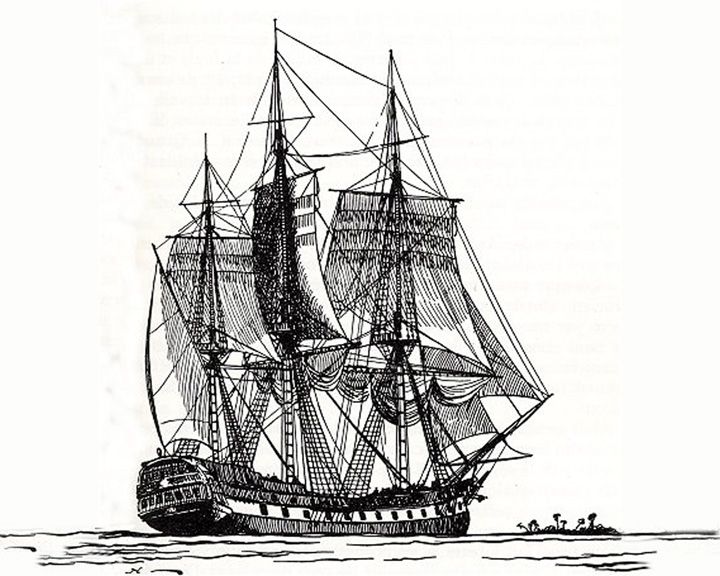 (Another (Another Boudeuse — French frigate First woman to circumnavigate the globe on board, Jeanne Baret, disguised as man. She is also famous as the exploration ship of Louis Antoine de Bougainville, 1766-1769. ("Another IMAGE" is the commemorative stamp issued.) LAUNCHED: 1766, March 18 → FATE: Broken up for firewood at Malta in early 1800. |
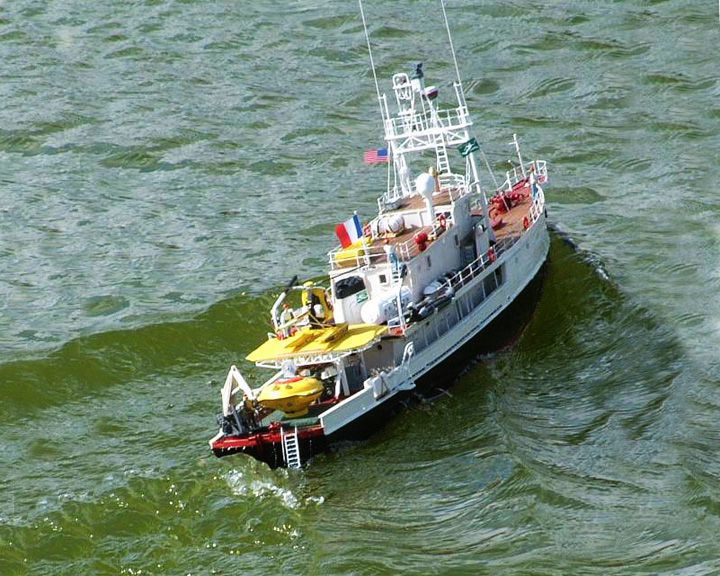 (Another (Another Calypso, RV — American minesweeper built for the British; refitted for research Oceanographer Jacques-Yves Cousteau sailed her as a mobile laboratory for field research. During World War II she served as a minesweeper and carried advanced equipment, including mini submarines. LAUNCHED: 1941, March 21, converted in 1950 → FATE: Sank in 1996, raised, neglected, and now being restored in Brittany. |
 (Another (Another Challenger, HMS — British corvette; steam-assisted Undertook the first global marine research expedition. She was the flagship of the Australia Station between 1866 and 1870. LAUNCHED: 1858, February 18 → FATE: Broken up for her copper end in England in January, 1921. |
 Columbia Rediviva — American full-rigged 3 masted sailing ship First American ship to circumnavigate the globe. In 1792, Captain Robert Gray in command, she was the first ship to enter the Columbia River in the Pacific Northwest. LAUNCHED: 1787 → FATE: Salvaged in 1806. |
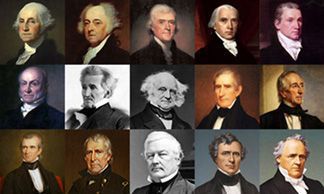

|
Page 2
|
 Discovery — British three-masted barque The ship that carried Scott and Shackleton on their first successful journey to the Antarctic. She was locked in the ice of the Antarctic for two years. The ship was eventually freed in February, 1904 by the use of controlled explosives. LAUNCHED: 1901, March 18 → FATE: Museum ship in Dundee, Scotland. |
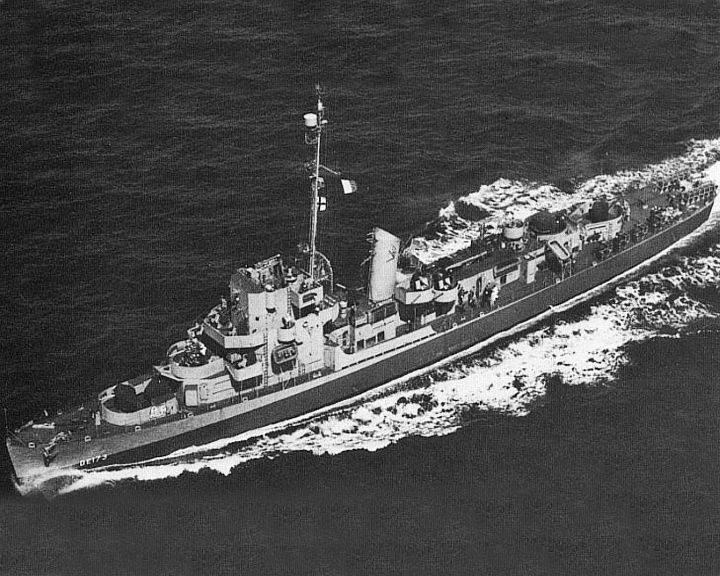 Eldridge, USS — American destroyer escort Famed as part of an alleged military experiment of cloaking ships invisible and carried out by the U.S. Navy at the Philadelphia Naval Shipyard.. A 1984 movie of the incident, The Philadelphia Experiment, presented a fictionalized version of the incident. LAUNCHED: 1943, July 25 → FATE: Decommisioned and scrapped November 11, 1999. |
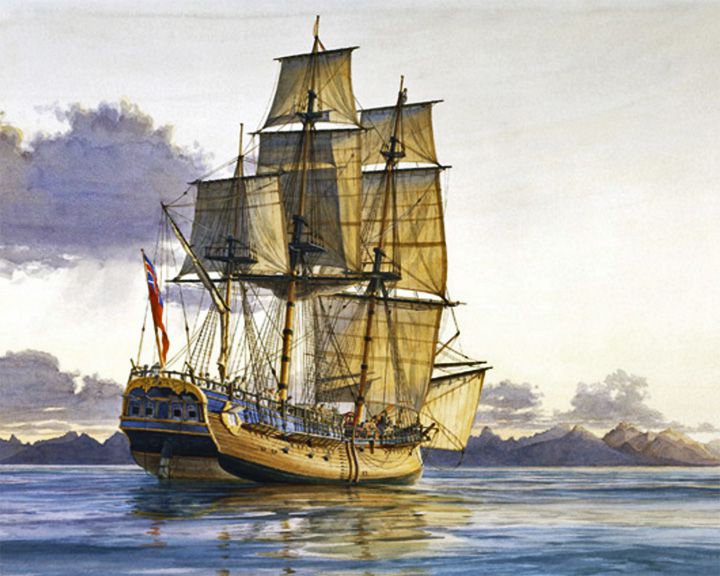 (Another (Another Endeavour, HMS — British collier, three-masted; refitted in 1768 for the expedition James Cook's ship during his voyage to explore the Pacific Ocean and Terra Australis Incognita. She became the first ship to reach the east coast of Australia at Botany Bay in April 1770, and went on to circumnavigate the world. LAUNCHED: 1764, June → FATE: Later renamed Lord Sandwich. Scuttled in a blockade of Narragansett Bay, Rhode Island, in 1778. |
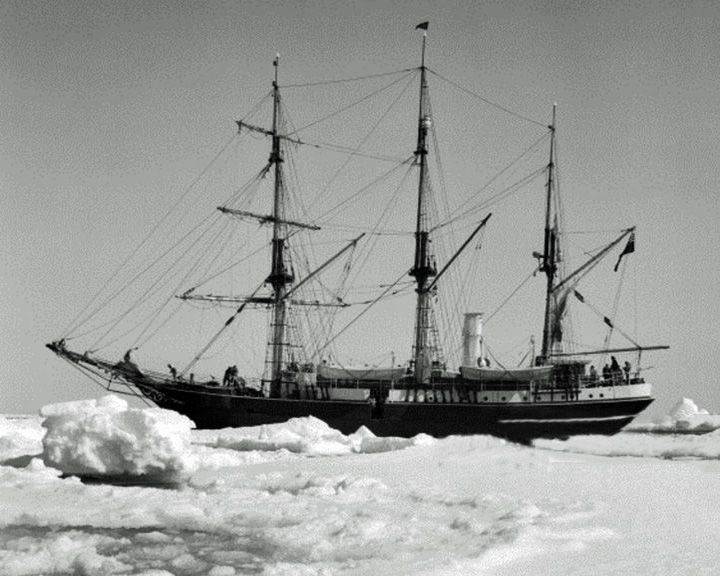 (Another (Another Endurance — Norwegian barquentine, three-masted Used by Sir Ernest Shackleton for the 1914 Imperial Trans-Antarctic Expedition. Her original purpose was as an luxurious ice-capable steam yacht designed for polar conditions. She was one of the strongest wooden ship ever built. LAUNCHED: 1912, December 18 → FATE: Crushed by pack ice in the Weddell Sea in 1915. |
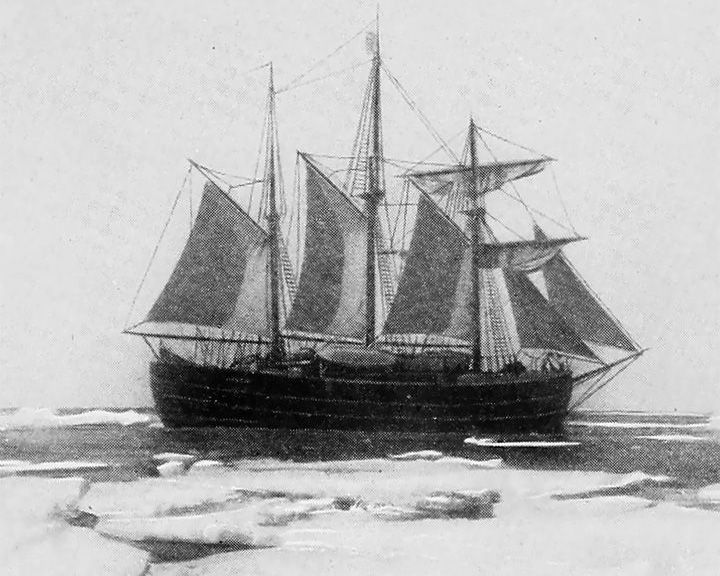 Fram — Norwegian schooner Used in expeditions in the Arctic and Antarctic regions by the Norwegian explorers. Most likely she was the strongest ship ever built, having sailed farthest north and south than any other wooden ship. LAUNCHED: 1892 → FATE: Currently on display at the Fram Museum, Oslo, Norway. |
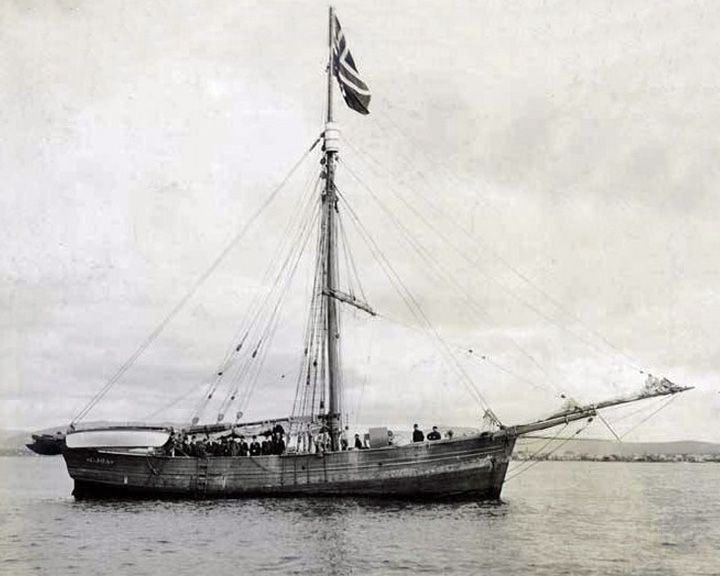 Gjøa — Norwegian sloop, square sterned The first vessel to transit the Northwest Passage. She reached San Francisco in 1906 where she was put on display, but slowly deteriorated until 1949 when she was refurbished. Then in 1972 she was returned to Norway. LAUNCHED: 1872 → FATE: On display at the Fram Museum in Bygdøy, Norway. |
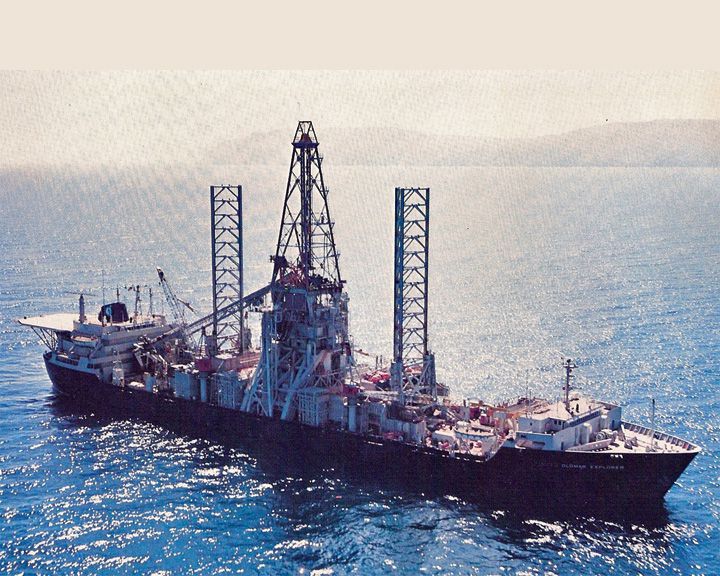 Glomar Explorer — American deep sea research vessel Built for a secret operation by the CIA to recover a sunken Soviet submarine, K-129 which was lost in April, 1968. She was converted into a deep sea oil drilling ship in 1997. LAUNCHED: 1972, November 18 → FATE: Currently operates as the GSF Explorer. |
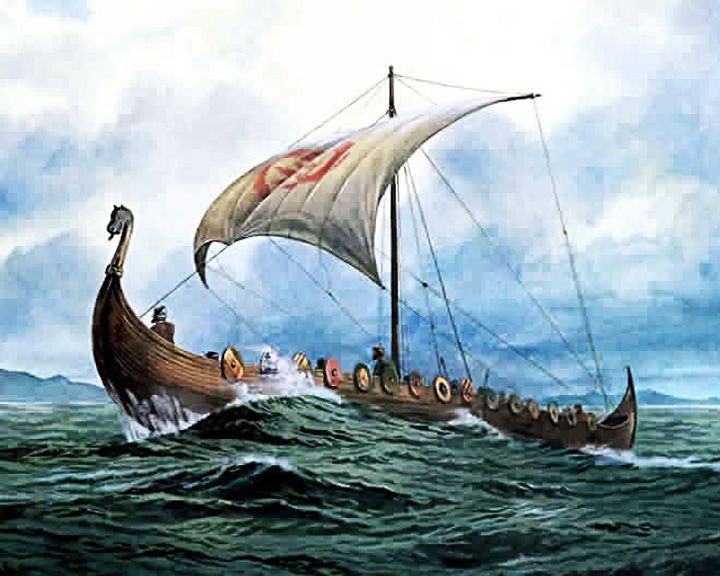 (Another (Another Gokstad — Viking clinker-built ship Viking ship found in a burial mound at Gokstad farm in Sandefjord, Norway in 1880. Later she was used for the burial of an important chieftain who died about 900 A.D. (A replica is on display at the Hjemkomst Center museum in Moorhead, MN.) LAUNCHED: 890, circa → FATE: On display at the Viking Ship Museum in Oslo, Norway. |
|
Page 3
|
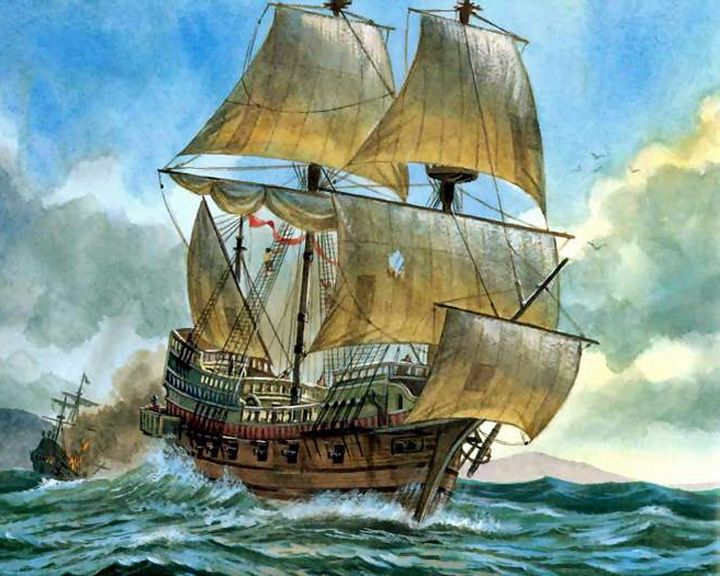 Golden Hind — English galleon Second ship to circumnavigation of the globe between 1577 and 1580, captained by Sir Francis Drake. Several replicas were built, the latest the Golden Hinde lauched in 1973. LAUNCHED: 1576, probably → FATE: In dry dock at Deptford, England as a museum piece, rotted away after decades around 1650. |
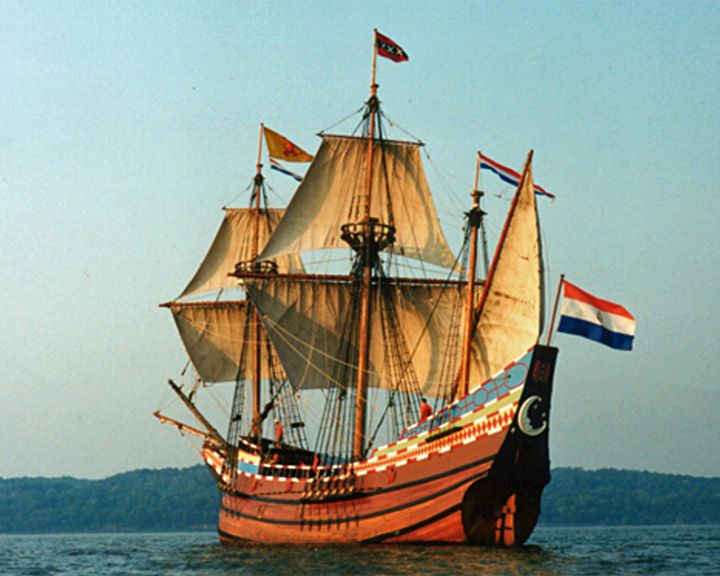 Half Moon — Dutch flyboat, square-rigged, three-masted, wooden Henry Hudson's ship looking for Northwest Passage. Englishman Henry Hudson was in the service of the Dutch East India Company. LAUNCHED: 1609, March → FATE: In 1618 the ship was destroyed during an English attack on Jakarta. |
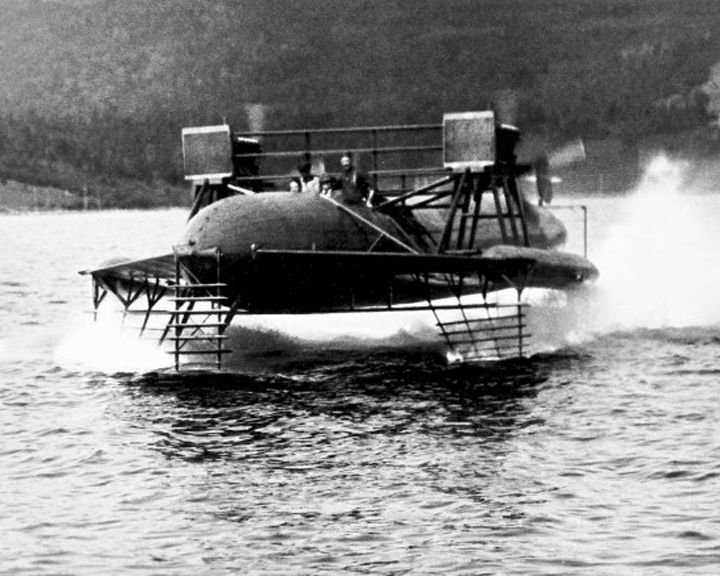 HD-4 — American hydrofoil An early research hydrofoil watercraft developed by the Alexander Graham Bell. She set a world marine speed record of 70.86 miles per hour (114.04 km/h), that stood for almost a year. LAUNCHED: 1919 → FATE: Dismantled in 1921, laying for decades on the shore at Beinn Bhreagh, Nova Scotia. |
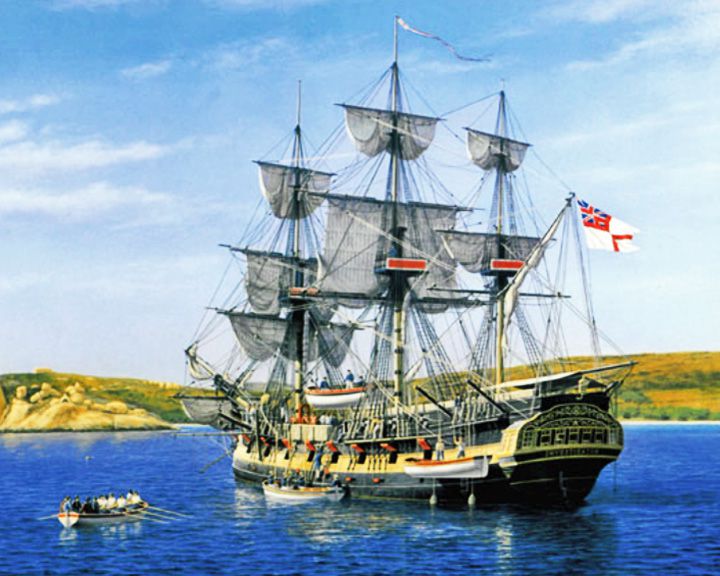 Investigator, HMS — British collier, then in 1801 converted to a survey ship. The first ship to circumnavigate Australia. The Royal Navy sold her in 1810 and she returned to mercantile service under the name Xenophon. LAUNCHED: 1795 → FATE: Broken up about 1872. |
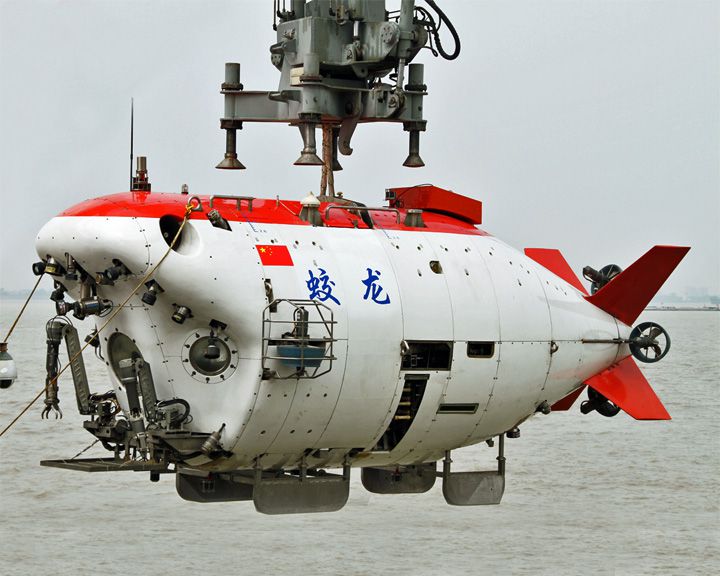 Jiaolong — Chinese research vessel, submersible World's first manned research submersible designed to reach a depth of 7,000 meters below sea level. Named after a mythical river dragon, spiritually akin to the crocodile. LAUNCHED: 2010, July → FATE: Still in operation. |
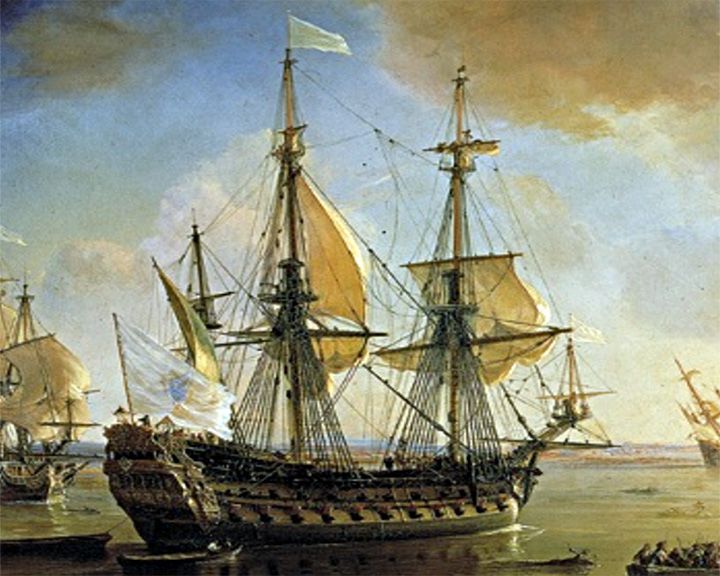 (Another (Another La Belle — French barque Explorer Robert De La Salle's flagship in the 1680s; its wreckage recovered in the late 1990s was an important maritime archaeological achievement. Discovered in 1995, the hull of the ship was recovered with over a million artifacts, many on display at the Bob Bullock Texas State History Museum in Austin, Texas. LAUNCHED: 1684, probably → FATE: Washed aground and wrecked in Matagorda Bay in the Gulf of Mexico in 1686. |
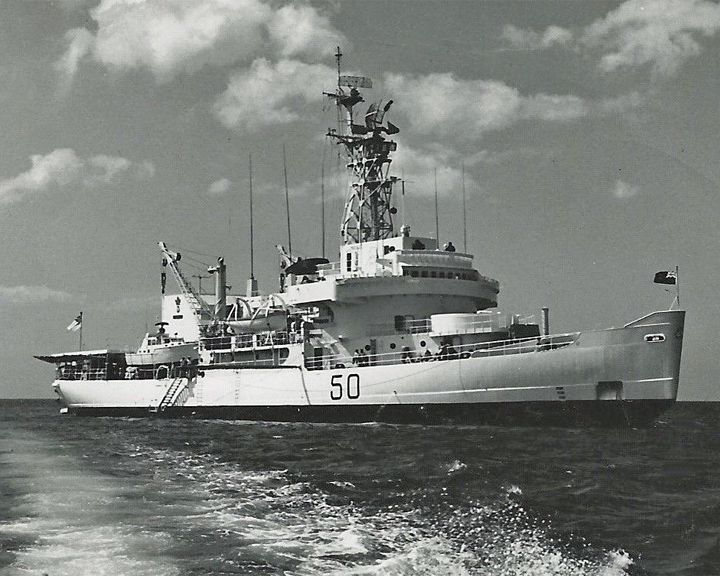 Labrador, CCGS — Canadian Wind-class icebreaker The first ship to circumnavigate North America in a single voyage and first warship to transit the Northwest Passage. Her career marked the beginning of the CCG's icebreaker operations which continue to this day. LAUNCHED: 1951, December 14 → FATE: Sold for scrap and broken up 1989. |
 Matthew — English caravel Sailed by John Cabot, first European to reach North America. Apparently, she was a small ship of fifty tons carrying twenty men and food for seven or eight months. LAUNCHED: 1496, or earlier; replica launched 1996 → FATE: Original ship, unknown; replica on display at M Shed Museum, Bristol, England. |
|
Page 4
|
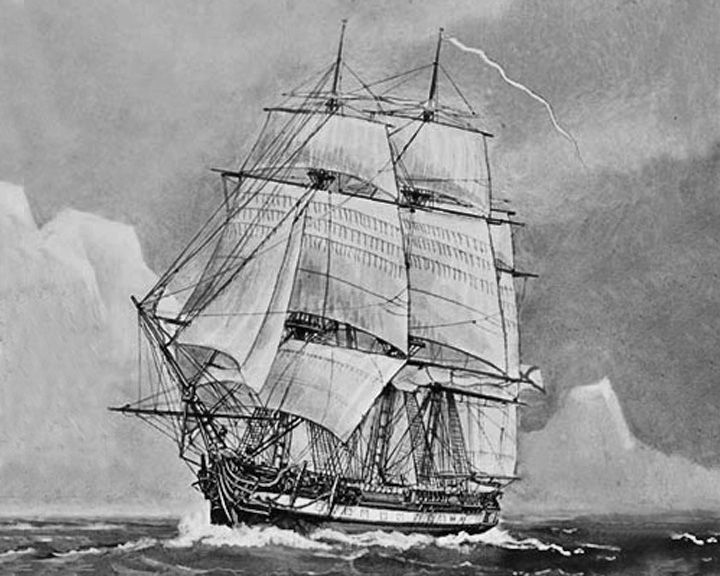 (Another (Another Mirny — Russian sloop-of-war First to discover the continent of Antarctica and circumnavigated it twice. A medal was issued by the Russian Admiralty to commemorate the expedition as seen in "Another IMAGE". LAUNCHED: 1819 → FATE: Unknown. |
 Nina, (La) — Spanish four masted caravel The smallest of Columbus' ships of discovery. She became Columbus' flag ship back to Spain after the loss of Santa Maria. LAUNCHED: 1492 → FATE: Last heard of in 1501; fate unknown. |
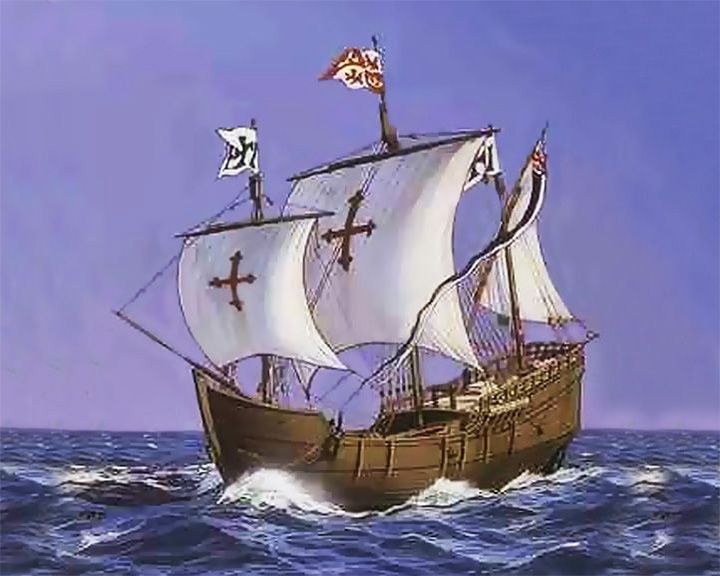 Pinta, (La) — Spanish three masted caravel One of Columbus' ships of discovery. The fastest of Columbus' three ships to America in 1492, and Columbus' flag ship on the return trip to Spain in 1943. She was among the fleet of 17 ships for Columbus' second voyage. LAUNCHED: 1441, circa → FATE: Around 1501. |
 Resolution, HMS — British Collier The first ship to cross the Antarctic Circle reaching beyond latitude 71 degrees south. She was the ship on which Captain James Cook made his second and third voyages of exploration in the Pacific. LAUNCHED: 1770 → FATE: Taken by the French June 10, 1782, renamed La Liberté and ended up rotting in Narragansett Bay not far from Cook's other ship, Endeavour. |
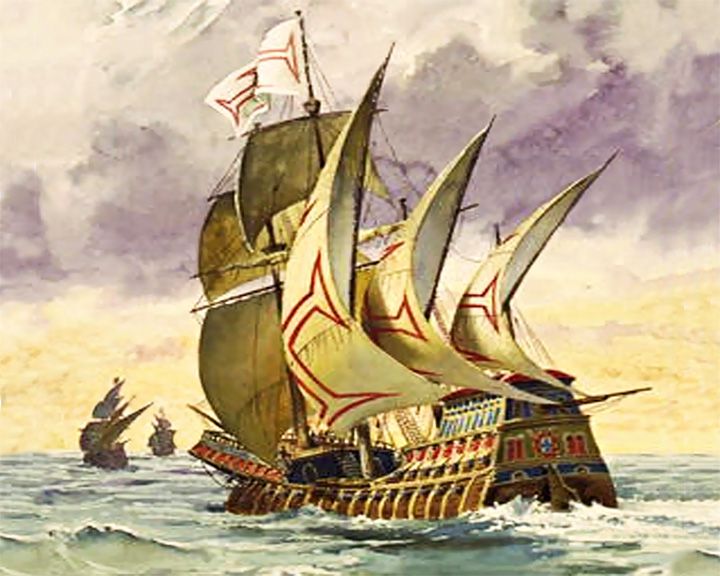 São Gabriel — Portugese caravel Flagship of Vasco da Gama's armada which carried the first Europeans to the coast of India. She, along with ships São Rafael, Bérrio, and São Miguel, made the round trip in two years. LAUNCHED: 1497 → FATE: Unknown. |
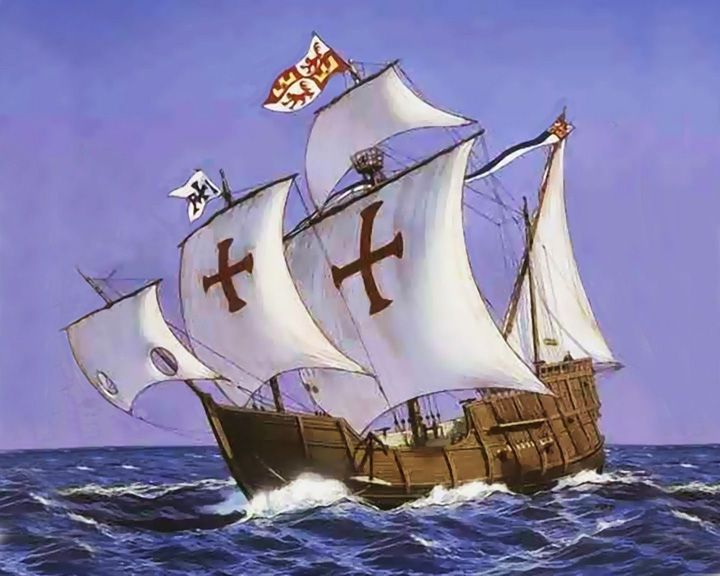 Santa Maria — Spanish carrack The largest of Columbus' ships of discovery. The anchor of the Santa María now resides in the Musée du Panthéon National Haitien, in Port-au-Prince, Haiti. LAUNCHED: 1460, circa → FATE: Ran aground and lost near Cap-Haitien, Haiti, December 25, 1492. |
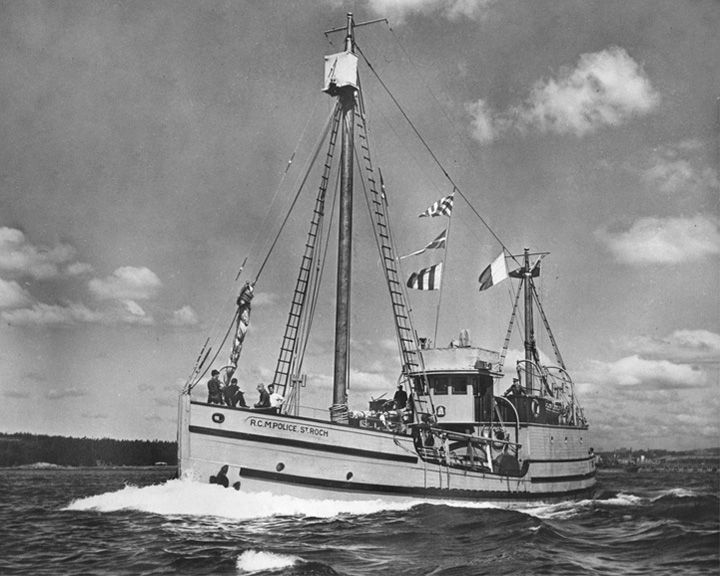 St. Roch — Canadian schooner The first ship to completely circumnavigate North America, and first to complete passage through the Northwest Passage west to east. She was also the first vessel to pass through the more northerly route of the Northwest Passage, and was also the first to navigate the passage in a single season. LAUNCHED: 1928, May 18 → FATE: On exhibit at the Vancouver Maritime Museum. |
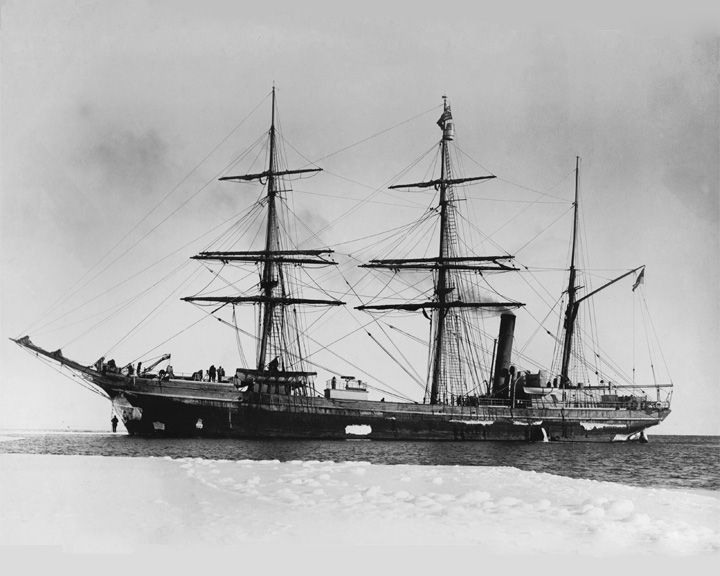 Terra Nova — British wooden-hulled barque Serving in the British Antarctic Expedition 1910, best remembered for the death of Captain Scott and four companions. She was built for the Dundee whaling and sealing fleet, working 10 years in the annual seal fishery in the Labrador Sea. LAUNCHED: 1884 → FATE: Sank off the southwestern tip of Greenland September 13, 1943. |
|
Page 5
|
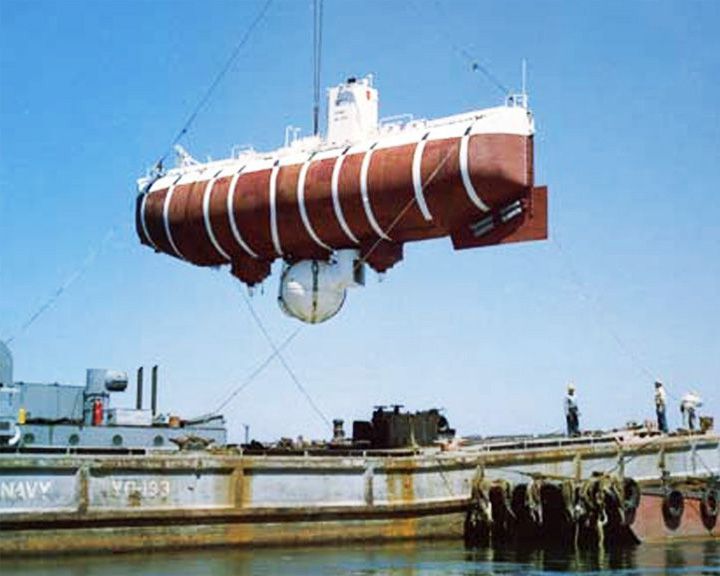 Trieste — Italian deep-diving research bathyscaphe; Swiss designed Dove to a record ocean depth of about 10,911 metres, or about 6.8 miles. She reached the ocean floor in the Mariana Trench on January 23, 1960. She found the missing submarine USS Thresher off the coast of New England in August of 1963. LAUNCHED: 1953, August 18 → FATE: On display at the U.S. Naval National Undersea Museum in Keyport, Washington. |
 Victoria — Spanish carrack or nao First ship to circumnavigate the world — August, 1519 to September of 1522; a total of 42,000 miles. Captain Ferdinand Magellan was killed in the Phillipines; another four ships were lost along the way. LAUNCHED: 1518, about → FATE: 1522 or soon after. |
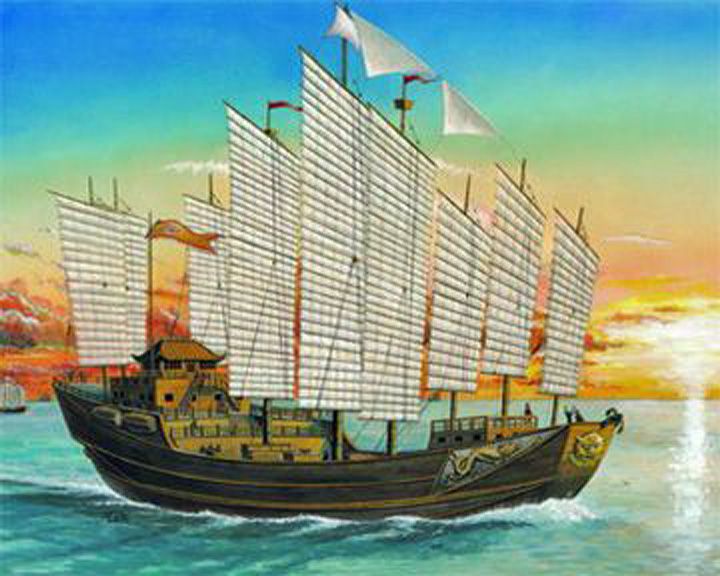 (Another (Another Zheng He's fleet — Chinese treasure ship The fleet's voyages came before most of the famous European voyages of discovery. Zheng He's seven expeditions were designed to establish a Chinese presence in the Indian Ocean and control trade. The ships dwarfed European ships of that century. LAUNCHED: 1405, first voyage → FATE: Last voyage, 1430. |
The number of All Countries Ships of Exploration and Research listed is 34 The contents of this page are available under the Creative Commons Attribution-Share Alike 3.0 Unported license and the GNU Free Documentation License (GFDL). |
|
|
First Ship on each page
| |
| Page | Ship Name (Country and Type) |
| 1. | Alvin, DSV (American research vessel) |
| 2. | Discovery (British barque) |
| 3. | Golden Hind (English galleon) |
| 4. | Mirny (Russian sloop-of-war) |
| 5. | Trieste (Italian deep-diving research bathyscaphe) |
All Countries | |
| 1. | Alvin, DSV American research vessel |
| 2. | Beagle, HMS English sloop |
| 3. | Boudeuse French frigate |
| 4. | Calypso, RV American minesweeper |
| 5. | Challenger, HMS British corvette |
| 6. | Columbia Rediviva American full-rigged |
| 7. | Discovery British barque |
| 8. | Eldridge, USS American destroyer escort |
| 9. | Endeavour, HMS British collier |
| 10. | Endurance Norwegian barquentine |
| 11. | Fram Norwegian schooner |
| 12. | Gjøa Norwegian sloop |
| 13. | Glomar Explorer American deep sea research vessel |
| 14. | Gokstad Viking clinker-built |
| 15. | Golden Hind English galleon |
| 16. | Half Moon Dutch flyboat |
| 17. | HD-4 American hydrofoil |
| 18. | Investigator, HMS British collier |
| 19. | Jiaolong Chinese research vessel |
| 20. | La Belle French barque |
| 21. | Labrador, CCGS Canadian Wind-class icebreaker |
| 22. | Matthew English caravel |
| 23. | Mirny Russian sloop-of-war |
| 24. | Nina, (La) Spanish caravel |
| 25. | Pinta, (La) Spanish three masted caravel |
| 26. | Resolution, HMS British Collier |
| 27. | São Gabriel Portugese caravel |
| 28. | Santa Maria Spanish carrack |
| 29. | St. Roch Canadian schooner |
| 30. | Terra Nova British wooden-hulled barque |
| 31. | Trieste Italian deep-diving research bathyscaphe |
| 32. | Victoria Spanish carrack or nao |
| 33. | Zheng He's fleet Chinese treasure ship |
|
About the Data There are more than 400 ships in this database, but the initial list is only for famous ships names that begin with letters "A-B". For other listings, use the country and type tabs. Touching (or cursor over) a ship image produces an enlargement. Touch anywhere else (or move the cursor off the image) to close the larger image. Touching (or clicking on) any underlined name will link to a page with more information. Although submarines are usually called boats, they are grouped with ships here. Most of the information comes from Wikipedia. |
^
Other Pages in Names Galore: | |
Famous Cowboy Names Sports Team Names Other Name Lists | Name Generators Naming Fun Stories about Names |